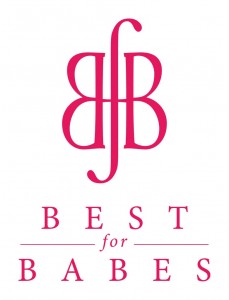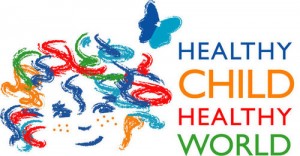Breastfeeding
Impact on child survival and global situationOptimal breastfeeding of infants under two years of age has the greatest potential impact on child survival of all preventive interventions, with the potential to prevent 1.4 million deaths in children under five in the developing world (Lancet 2008). The results of a study conducted in Ghana show that breastfeeding babies within the first hour of birth can prevent 22 per cent of neonatal deaths.
Breastfed children have at least six times greater chance of survival in the early months than non-breastfed children. Breastfeeding drastically reduces deaths from acute respiratory infection and diarrhoea, two major child killers, as well as from other infectious diseases (WHO-Lancet 2000). The potential impact of optimal breastfeeding practices is especially important in developing country situations with a high burden of disease and low access to clean water and sanitation. But non-breastfed children in industrialized countries are also at greater risk of dying - a recent study of post-neonatal mortality in the United States found a 25% increase in mortality among non-breastfed infants. In the UK Millennium Cohort Survey, six months of exclusive breast feeding was associated with a 53% decrease in hospital admissions for diarrhoea and a 27% decrease in respiratory tract infections.
While breastfeeding rates are no longer declining at the global level, with many countries experiencing significant increases in the last decade, only 38 per cent of children less than six months of age in the developing world are exclusively breastfed and just 39 per cent of 20-23 month olds benefit from the practice of continued breastfeeding.
Map: Percentage of children <six months old exclusively breastfed (2000-2006)
.gif)
Recommendations for optimal breastfeeding
The World Health Organization and UNICEF recommendations on breastfeeding are as follows: initiation of breastfeeding within the first hour after the birth; exclusive breastfeeding for the first six months; and continued breastfeeding for two years or more, together with safe, nutritionally adequate, age appropriate, responsive complementary feeding starting in the sixth month.
Benefits of breastfeeding
Breastfeeding has an extraordinary range of benefits. It has profound impact on a child’s survival, health, nutrition and development. Breast milk provides all of the nutrients, vitamins and minerals an infant needs for growth for the first six months, and no other liquids or food are needed. In addition, breast milk carries antibodies from the mother that help combat disease. The act of breastfeeding itself stimulates proper growth of the mouth and jaw, and secretion of hormones for digestion and satiety. Breastfeeding creates a special bond between mother and baby and the interaction between the mother and child during breastfeeding has positive repercussions for life, in terms of stimulation, behaviour, speech, sense of wellbeing and security and how the child relates to other people. Breastfeeding also lowers the risk of chronic conditions later in life, such as obesity, high cholesterol, high blood pressure, diabetes, childhood asthma and childhood leukaemias. Studies have shown that breastfed infants do better on intelligence and behaviour tests into adulthood than formula-fed babies.
Virtually every mother can breastfeed, if given appropriate support, advice and encouragement, as well as practical assistance to resolve any problems. Studies have shown that early skin to skin contact between mothers and babies, frequent and unrestricted breast feeding to ensure continued production of milk and help with positioning and attaching the baby increase the chances of breast feeding being successful.
Breastfeeding also contributes to maternal health immediately after the delivery because it helps reduce the risk of post-partum haemorrhage. In the short term, breastfeeding delays the return to fertility and in the long term, it reduces type 2 diabetes and breast, uterine and ovarian cancer. Studies have also found an association between early cessation of breastfeeding and post natal depression in mothers.
Risks of mixed feeding
Mixed feeding, or giving other liquids and/or foods together with breast milk to infants under 6 months of age, is widespread in many countries. This practice poses risks to an infant’s health because it can increase the chance of their getting diarrhea and other infectious diseases. Mixed feeding, especially giving water or other liquids, can also causes the supply of breast milk to decrease as the baby sucks less at the breast. Babies do not need liquids other than breastmilk, not even water, in the first 6 months as breastmilk contains all the water a baby needs, even in very hot climates.
Mixed feeding increases the risk of mother to child transmission of HIV. Exclusive breastfeeding for up to six months was associated with a three to four fold decreased risk of transmission of HIV compared to mixed feeding breastfeeding in several African studies.
Risks of artificial feedingIn many countries, the reinforcement of a "breastfeeding culture" and its vigorous defense against incursions of a “formula-feeding culture” is imperative. Many mothers neither exclusively breastfeed for the first six months of the baby’s life nor continue breastfeeding for the recommended two years or more, and instead replace breast milk with commercial breastmilk substitutes or other milks. Artificial feeding is expensive and carries risks of additional illness and death, particularly where the levels of infectious disease are high and access to safe water is poor. Formula-feeding poses many practical challenges for mothers in developing countries, including ensuring the formula is mixed with clean water, that dilution is correct, that sufficient quantities of formula can continually be acquired and that the feeding utensils, especially if bottles are used, can be adequately cleaned.
Formula is not an acceptable substitute for breastmilk because formula, at its best, only replaces most of the nutritional components of breast milk: it is just a food, whereas breast milk is a complex living nutritional fluid containing anti-bodies, enzymes, long chain fatty acids and hormones, many of which simply cannot be included in formula. Furthermore, in the first few months, it is hard for the baby’s gut to absorb anything other than breastmilk. Even one feeding of formula or other foods can cause injuries to the gut, taking weeks for the baby to recover.
The major problems are the societal and commercial pressure to stop breastfeeding, including aggressive marketing and promotion by formula producers. These pressures are too often worsened by inaccurate medical advice from health workers who lack proper skills and training in breastfeeding support. In addition, many women have to return to work soon after delivery, and they face a number of challenges and pressures which often lead them to stop exclusive breastfeeding early. Working mothers need support, including legislative measures, to enable them to continue breastfeeding.
UNICEF action
UNICEF supports countries to implement the priority actions outlined in the Global Strategy for Infant and Young Child Feeding. The focus in countries is on five major areas:
1. At national level: ensuring that not only is appropriate policies and legislation in place but that these are implemented and enforced. This includes support for:
- development and implementation of national infant and young child feeding policies and strategy frameworks,
- development and implementation of programme plans to operationalize the strategy,
- development and enforcement of appropriate legislation (such as the International Code of Marketing of Breast milk Substitutes and maternity protection legislation).
- Encouraging and facilitating strategic public and private partnerships with other international and country-level actors for improvement of infant and young child nutrition
3. Community level: support is provided for community-based nutrition and mother support activities involving for example community health workers, lay counselors and mother to mother support groups.
4. Communication and advocacy activities on breastfeeding are also a key component of UNICEF support. World Breastfeeding Week is an annual advocacy event celebrated around the world with support from UNICEF, WHO and other partners.
5. IYCF in especially difficult circumstances: UNICEF supports interventions to address infant feeding in emergencies and infant feeding in the context of HIV/AIDS.
Breastfeeding Saves More Lives Than Any Other Preventive Intervention!




